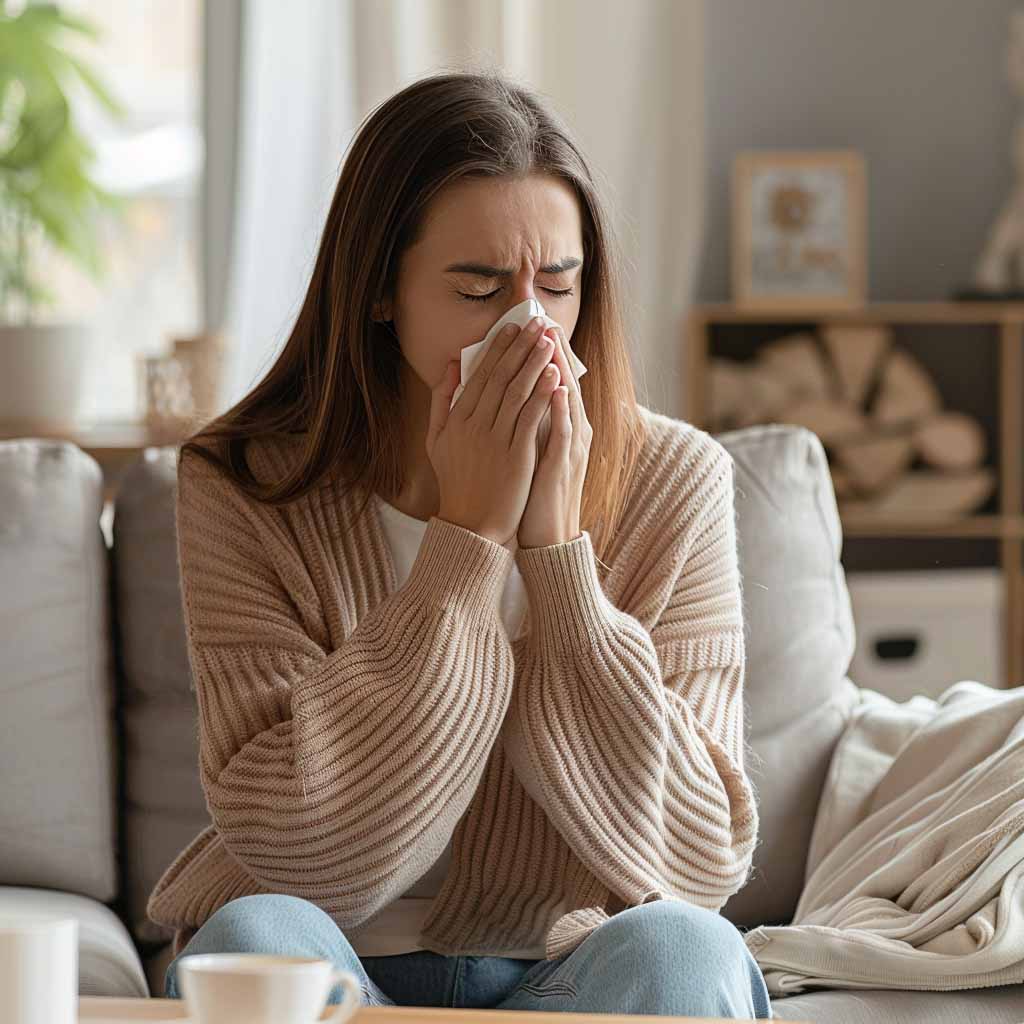Poor indoor air quality can lead to various health issues, from minor irritations to severe respiratory problems.
As modern homes become more energy-efficient and airtight, the quality of the air we breathe indoors has gained significant attention. Maintaining good indoor air quality is crucial for your family’s health and well-being.
At Thomas Hoffmann Air Conditioning & Heating, we understand the importance of clean air in your home. With our expertise and comprehensive HVAC services, we aim to provide you with the knowledge and tools to tackle indoor air quality challenges head-on.

Common Sources and Solutions of Indoor Air Pollution
The air quality in your home is a critical aspect of your overall well-being. It can cause mild discomfort like allergies and headaches, exacerbate chronic respiratory conditions, and contribute to long-term health issues. Understanding the sources of indoor air pollution and taking proactive measures to mitigate them is essential.
- Dust and Dirt
- Source: Everyday activities such as cleaning, cooking, and moving around can stir up dust and dirt, which can accumulate in your HVAC system.
- Solution: Regularly clean your home and replace HVAC filters to prevent dust build-up. Consider using vacuum cleaners with HEPA filters to capture fine particles more effectively.
- Pet Dander
- Source: Pets shed tiny flakes of skin, fur, and feathers that can become airborne and circulate throughout your home.
- Solution: Bathe and groom your pets frequently and use air purifiers with HEPA filters to capture pet dander. Creating pet-free zones in the home, especially in bedrooms, can also help reduce exposure.
- Volatile Organic Compounds (VOCs)
- Source: VOCs are emitted from products like paint, cleaning supplies, and furnishings.
- Solution: Use low-VOC or VOC-free products and ensure proper ventilation when using chemicals in your home. Store these products in well-ventilated areas and dispose of unused items properly.
- Mold and Mildew
- Source: Moist environments can lead to mold and mildew growth, which release spores into the air.
- Solution: Control humidity levels in your home, fix leaks promptly and use dehumidifiers in damp areas. Also, regularly inspect areas prone to moisture, such as basements and bathrooms, for signs of mold.
- Smoke
- Source: Tobacco smoke and smoke from cooking can significantly degrade indoor air quality.
- Solution: Prohibit smoking indoors and use exhaust fans or range hoods when cooking. Regularly clean cooking surfaces and filters to prevent smoke residue from building up.
- Pollen
- Source: Pollen can enter your home through open windows and doors or be carried in on clothing and pets.
- Solution: Keep windows and doors closed during high pollen seasons and clean regularly to reduce pollen accumulation. Use high-efficiency filters in your HVAC system to trap pollen particles.
- Household Cleaners
- Source: Many cleaning products contain harmful chemicals that can release fumes.
- Solution: Opt for natural or green cleaning products and ensure proper ventilation when cleaning. Look for products labeled as environmentally friendly or non-toxic.
Tips for Improving Indoor Air Quality
- Regular HVAC Maintenance – Schedule regular maintenance for your HVAC system to ensure it is clean and functioning efficiently. At Thomas Hoffmann Air Conditioning & Heating, we offer comprehensive maintenance services, including duct cleaning and filter replacement, to keep your system in top condition.
- Use Air Purifiers – Invest in high-quality air purifiers to remove contaminants from the air. Choose models with HEPA filters for maximum effectiveness. Place air purifiers in high-traffic areas or rooms where you spend the most time.
- Ventilation – Proper ventilation is key to reducing indoor pollutants. Use exhaust fans in bathrooms and kitchens, and consider installing a whole-house ventilation system. Ensure that fresh air can circulate, particularly in tightly sealed homes.
- Humidity Control – Maintain indoor humidity levels between 30-50% to prevent mold growth and reduce dust mites. Use dehumidifiers or humidifiers as needed. Monitor humidity levels with a hygrometer and adjust as necessary.
- Houseplants – Certain houseplants, like spider plants and peace lilies, can help improve air quality by absorbing pollutants. Incorporate a variety of plants to maximize the air-purifying effects, but be mindful of any allergies.
- Clean Regularly – Regular cleaning reduces dust, dirt, and other pollutants. Focus on high-traffic areas and use vacuum cleaners with HEPA filters. Don’t forget to clean areas that are often overlooked, such as curtains, upholstery, and behind appliances.
Why Choose Thomas Hoffmann Air Conditioning & Heating?
At Thomas Hoffmann Air Conditioning & Heating, we are dedicated to helping you maintain a healthy home environment. Our expert team offers a range of services, including HVAC maintenance, air purifier installation, and indoor air quality assessments. Serving the St. Louis area, including Affton, Arnold, Ballwin, Brentwood, and more, we are committed to providing top-notch service to our community.
24/7 Service Call Now
At Thomas Hoffmann Air Conditioning & Heating, we pride ourselves on being a locally owned and operated HVAC company. With more than 30 years of experience and a master technician and mechanical engineer as our owner, we can replace, repair, and maintain your business or home’s HVAC system.
